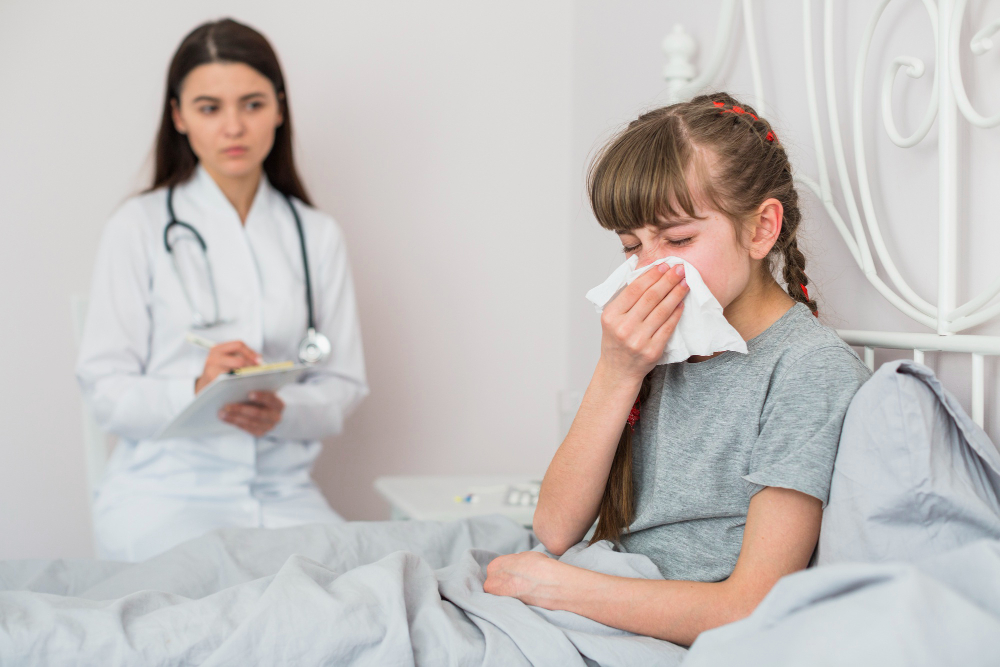Flu refers to respiratory disorders caused by a wide variety of viral strains.
Among the culprits behind this ailment are the influenza virus, parainfluenza viruses, Adenovirus, RSV, and others.
Predominantly affecting school-age youngsters, the flu disseminates through interpersonal contact, droplets in the air, and even aerosols. Its customary presentation includes a runny nose, high fever, hacking cough, reddened eyes, throbbing headache, and generalized bodily discomfort. The typical recovery period for a child grappling with the flu spans from three to five days.
However, on occasion, complications may arise, such as viral pneumonia or bronchiolitis. These complications exhibit rapid breathing, diminished oxygen saturation, lethargy, and diminished food intake, potentially necessitating hospitalization and in some severe cases, even care within an intensive care unit.
Navigating a child’s bout with the flu entails measures like administering paracetamol for fever control, inhaling steam to ease respiratory discomfort, ensuring ample rest, refraining from sending them to school, encouraging hydration, and providing nourishing sustenance. If a child afflicted by the flu does attend school, the risk of spreading the illness to others or contracting secondary viral or bacterial infections looms large, reinforcing the urgency of school avoidance during the flu episode.
Vigilance for potential complications remains paramount, particularly when a child exhibits oral aversion, rapid breathing, or somnolence. In such instances, promptly seeking consultation from a pediatrician at a nearby medical facility is prudent.
As the adage goes, prevention trumps cure. Consequently, what preventive measures should be embraced in the battle against the flu?
Foremost, refraining from sending an ailing child to school is imperative. Secondly, upholding rigorous hand hygiene and donning masks, akin to the practices during the era of Covid, contribute to containment efforts. Thirdly, adhering to judicious medical intervention during illness, eschewing self-medication and unwarranted antibiotic use, is advised.
Lastly, adhering to the annual administration of flu vaccines, as recommended by pediatric healthcare providers, forms a pivotal component of the defense strategy against this seasonal ailment.


